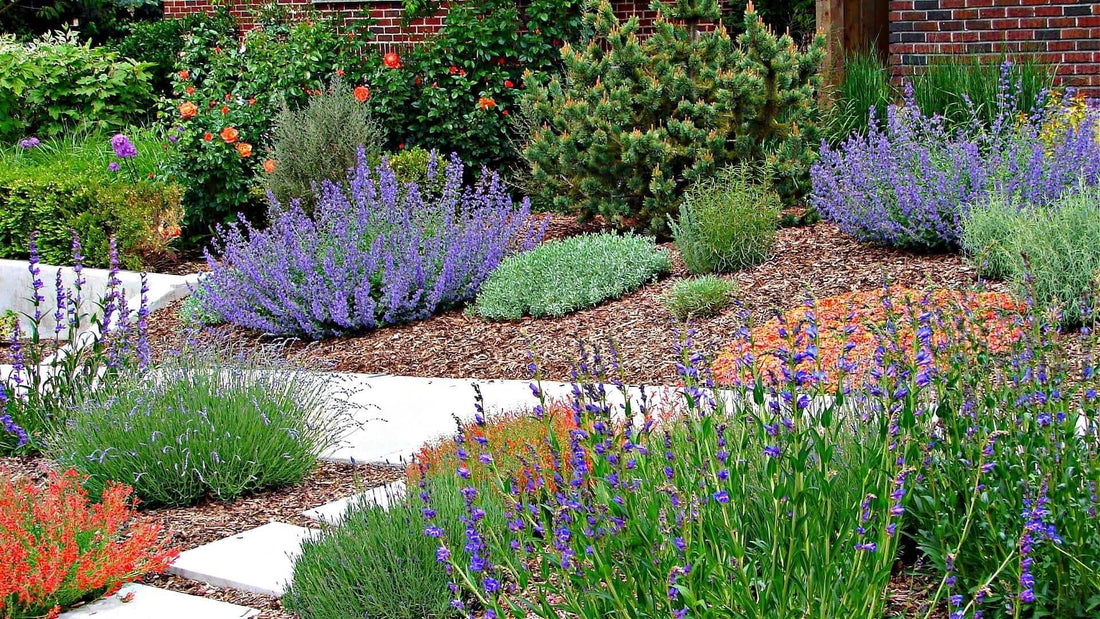
Xeriscaping: Water-Efficient Gardening for Dry Climates
Share
Xeriscaping
Gardening is a beloved pastime for many, but keeping a lush and vibrant garden can be a significant challenge in regions with dry climates or frequent droughts. This is where xeriscaping comes into play. Xeriscaping is a landscaping technique explicitly designed for arid and water-scarce environments. It helps conserve water and creates a beautiful and sustainable garden that thrives despite limited rainfall. This sweeping manual will explore the world of xeriscaping and the steps to create a water-efficient garden that flourishes in dry climates.
Understanding Xeriscaping
Before we dive into the step-by-step process of creating a xeriscape garden, it's essential to understand the principles and benefits of xeriscaping. The term "xeriscape" originates from the Greek word "xeros," meaning dry, and "scape," meaning view or scene. It is a landscaping philosophy that prioritizes water conservation while still allowing for a visually appealing and ecologically friendly garden.
Xeriscaping has gained popularity in arid regions and locations encountering water scarcity due to droughts and increasing environmental concerns. Here are some fundamental principles and benefits of xeriscaping:
1. Xeriscaping is a water-wise landscaping method that can significantly decrease water usage compared to traditional gardening practices. By carefully selecting plants adapted to the local climate and soil conditions and using water-saving methods such as mulching, drip irrigation, and rainwater gathering, you can make a stunning and sustainable landscape while minimizing water waste. This approach conserves water, reduces the need for fertilizers and pesticides, and promotes biodiversity by providing habitat for local wildlife.
2. Xeriscaping is a technique that uses plants requiring little to no water. As a result, xeriscape gardens require less maintenance compared to traditional gardens. With xeriscaping, once the plants are established, they can thrive with minimal attention, saving time and effort.
3. Xeriscaping is an eco-friendly technique using native and drought-tolerant plants. This approach promotes biodiversity by providing a wild home for different species of birds, insects, and other wildlife. By decreasing the need for chemical fertilizers and pesticides, xeriscaping helps to maintain a healthier and more sustainable ecosystem. Additionally, this technique conserves water by using plants adapted to the local climate and soil conditions, reducing the need for irrigation. Overall, xeriscaping is a great way to create a beautiful and environmentally friendly landscape.
4. By choosing to create a xeriscape garden, you may need to invest some money initially. However, in the long run, the amount you save on water bills and maintenance costs will make it a cost-effective decision. Additionally, a xeriscape garden can be an attractive and environmentally friendly alternative to a traditional garden, as it features drought-resistant plants and requires less water.
5. when thoughtfully planned and executed, a xeriscape garden can be a feast for the eyes. It boasts an array of vibrant colors, an exciting mix of textures, and an assortment of unique shapes that work together harmoniously. Despite the common belief that such gardens are uninteresting and lifeless, a well-designed xeriscape garden can be a visual delight.
Step-by-Step Guide to Xeriscaping
Now that we've explored the principles and benefits of xeriscaping, let's delve into the step-by-step process of creating your water-efficient garden in a dry climate.
1. Evaluate Your Landscape
Transforming your landscape into a xeriscape requires careful planning. It's crucial to begin by conducting a thorough evaluation of your yard. Analyze the soil type, topography, and vegetation to understand the ecosystem better. Also, consider various factors such as sunlight exposure, wind patterns, and the locations of any existing structures or utilities.
2. Choose Drought-Tolerant Plants
Creating a thriving xeriscape garden depends largely on choosing the right plants. It is imperative to opt for plant species native to the area or can withstand drought. Additionally, selecting plants that are well-suited to your specific climate is essential. Choosing wisely will help ensure that your xeriscape garden remains lush and healthy with minimal water usage. Native and drought-tolerant plants have evolved to thrive in low-water conditions, making them ideal for xeriscaping. Some of the most popular and visually appealing choices include succulents with unique shapes and textures, native grasses that sway gently in the breeze, fragrant lavender, striking yucca, and agave with their sculptural appearance. By choosing the proper plants, you can create a xeriscape garden that is not only functional but also aesthetically pleasing.
3. Group Plants Strategically
When planning your xeriscape garden, it's important to group plants based on their water needs. This technique, called hydrozoning, helps to conserve water by allowing you to water specific areas with the appropriate amount of water. To do this, place plants that require more water closer to your water source and those that need less water further away. By following hydrozoning, you can water your garden more efficiently and ensure that each plant receives the amount of water it needs to thrive.
4. Improve Soil Quality
Healthy soil is essential for plant growth in any garden. In xeriscaping, well-draining soil is necessary to prevent soggy roots. Add organic soil, like compost or mulch, to improve soil structure and moisture retention. This will help plants access and utilize water more efficiently.
5. Implement Efficient Irrigation
Although xeriscaping is designed to conserve water, some irrigation is still required, particularly during the establishment phase. To ensure efficient water delivery, consider using drip irrigation, soaker hoses, or a sprinkler system with a timer. Watering deeply but less frequently is recommended, as this helps promote profound root growth and plant resilience.
6. Use mulch
Applying mulch to the soil surface serves multiple purposes in a xeriscape garden. Mulch helps retain soil moisture, reduce weed growth, and regulate temperature. Mulch, such as wood chips or bark, adds a decorative element to your garden.
7. Embrace Hardscaping
Enhance your xeriscape design's aesthetic appeal and functionality by seamlessly incorporating hardscape elements such as rugged rocks, smooth decorative stones, and meandering gravel paths. These elements add visual interest and serve the practical purpose of reducing the amount of irrigated space. By leveraging hardscaping techniques, you can effectively control soil erosion and create distinct garden zones that are both functional and visually striking.
8. Maintain Your Xeriscape Garden
Even though xeriscaping is known for its low maintenance, some upkeep is still required. Regularly inspect your garden for signs of pest infestations, disease, or any irrigation issues. Prune and trim plants as needed, remove weeds and replenish mulch to keep your garden looking its best.
9. Adapt and Learn
Xeriscaping is not a one-size-fits-all approach. As you gain experience with your xeriscape garden, you may need to adjust based on plant growth, climate changes, and evolving preferences. Be willing to adapt and learn from your garden's performance over time.
10. Enjoy the Benefits
Once your xeriscape garden is established, sit back and enjoy the benefits. Not only will you have a beautiful, water-efficient garden, but you'll also contribute to water conservation efforts and promote sustainability in your community.
In conclusion, xeriscaping is a practical and environmentally responsible approach to gardening in dry climates. By following these steps and embracing the principles of water-efficient landscaping, you can create a stunning and sustainable garden that thrives with minimal water usage. Whether you live in an arid region or want to reduce your environmental footprint, xeriscaping offers a path to gardening success while conserving precious water resources.
